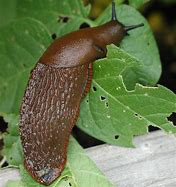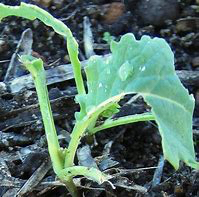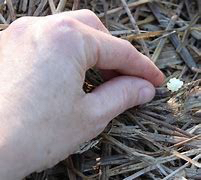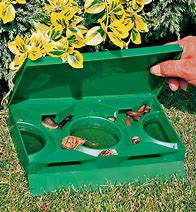The Problem
- Slugs are one of the most serious garden pests, eating everything from seedlings to leaves and stems to maturing fruit.
- Even a few slugs in your garden bed can be devastating since each slug can eat its own body weight in food several times each day.
Identification


- Slugs are not insects, but are “shell-less terrestrial gastropod mollusks,” more closely related to clams or squid.
- Slugs look something like a really fat worm with a couple of fleshy antennae sticking out of their head.
- Most are gray, dull orange or dark brown, and from 1 to 3 inches long.
- Since slugs feed at night, you will probably see signs of slug damage well before you see any actual slugs.
- Also, you may notice their glossy slime trails across the garden soil or the wood frame on your garden bed.
Signs of damage
- Rather than a few chewing teeth, slugs have thousands of very small teeth for rasping vegetation.
- Therefore, their feeding creates holes with jagged edges rather than the smooth-edged holes left by caterpillars.




Controls
- Slugs are actually quite easy to kill. An Internet search for “control garden slugs” will lead to dozens and dozens of ideas.
- The slugs’ survival and persistence is due to the fact that they can reproduce quickly and that they go unnoticed until the larger adults have caused significant damage.
- Slugs lay eggs on the surface of the soil, under leaves, bark, twigs or other plant debris. Therefore, one of the most effective controls is — once again — sanitation: cleaning up and disposing of all plant debris.
- Photo shows egg cluster. If you spot one of these, you can head off a bunch of new slug hatchlings.

- Slugs are as slow moving as their shell-bearing relatives, the snails; however, they are persistent and can travel as far as 40 feet in order to feed.
- A popular means of controlling them is to make crawling over your garden bed an unpleasant experience. This can be accomplished using
- coffee grounds (which also provide fertilizer),
- diatomaceous earth,
- crushed egg shells,
- crushed lava rock, and
- a number of other rough surfaces you can find reference on the web.
- Chives, mint, garlic, geraniums, foxgloves and fennel are all plants that — to one degree or another —- can repel slugs.
- More information is available on the web.
- Commercial slug baits with iron phosphate. (Sluggo, Slug Magic, Garden Safe Slug and Snail Bait) are also popular.
- Avoid baits that contain methiocarb or metaldehyde as they are toxic to mammals.
- Beer traps are a quick and effective way to eliminate slugs.
- They also let you keep track of the size and numbers you kill.

-
- On the downside, they can also - kill some beneficial insects. -- Unless you make a trap that allows insects to escape

-
- Commercially produced slug traps come with covers to keep out the rain - and — presumably — some of the beneficial insects that fly around.

- Boards, watermelon rinds on the ground, orange or grapefruit rinds offer slugs a shelter where they can spend the day.
- These need to be tended to often or else they only help slugs reproduce faster.
- Barriers are physical structures that in some way prevent slugs from migrating into your planting bed.


- Ones made with copper are said to be the most effective since the copper reacts with the slug’s slime and gives them an electric shock.

